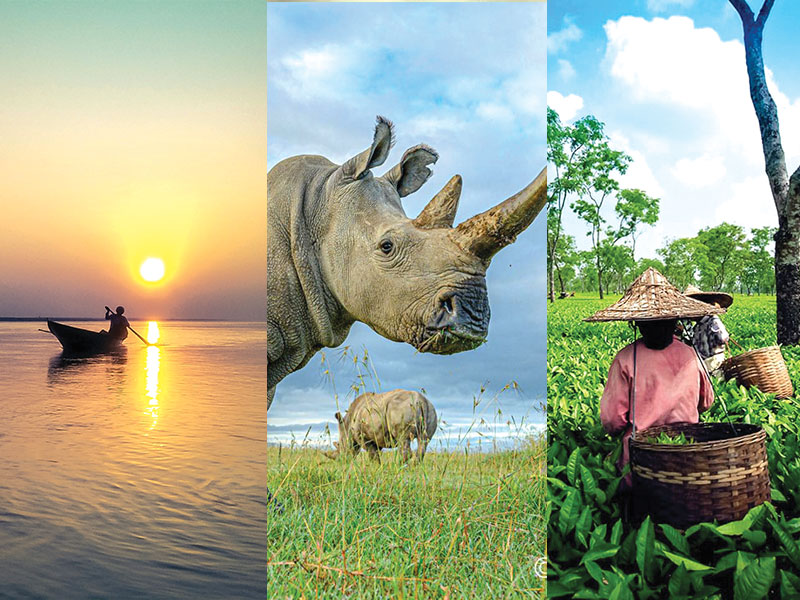Nurtured by the tempestuous Brahmaputra, terraced with tea gardens, home of the endangered one-horned rhino and replete with undulating hills, Assam offers a rich mix of natural beauty and cultural education Nurtured by the tempestuous Brahmaputra, terraced with tea gardens, home of the endangered one-horned rhino and replete with undulating hills and cosy hamlets, Assam (pop. 35 million) surprises and enchants the tourist in myriad ways. Etymologically the word ‘Assam’ finds its root in the Sanskrit word asoma meaning ‘peerless’. Historically ‘Assam’ is an anglicised version of asom — the name the Ahom tribe gave to the region after conquering it. Mythologically, the Brahmaputra (son of Brahma) is the only male river of India — a designated national waterway. Though Assam has been reduced to one-third of its original size over the past 45 years, it is still the largest of the ‘seven sisters’ states of the north-east. Flanked by Bhutan and Arunachal Pradesh in the north; Nagaland and Manipur in the east; Meghalaya, Tripura and Mizoram in the south and Bangladesh and West Bengal in the west, Assam is the most accessible of the north-east states of the Indian Union. Inevitably Assam’s past is shrouded in mythology. Its ancient name was Kamapura with its capital at Pragyotishpura — latter day Guwahati — as recited in Vedic literature. Kama — the god of love — after being reduced to ashes by Shiva was reborn here. Various sites mentioned in the great epic Mahabharata still exist in contemporary Assam. Aryan tribes comprising the priestly and warrior classes subjugated Assam in ancient times and the first king who ruled over Kamapura was Pushya Varman (350-380 AD), a contemporary of emperor Samudragupta, who reigned in north India. The Varman dynasty ruled Assam until 650 AD followed by the Salasthamba regime. Subsequently, the Pala Dynasty founded by Brahmapala (990-1010), ruled Assam until 1138. These early Hindu kings worshipped Shakti and were followers of mystic tantric cults some of which exist even today. The Ahoms from Myanmar (aka Burma) invaded Assam in the 13th century establishing a Hindu dynasty that flourished until the 19th century despite repeated invasions by the Mughals. The Burmese invaded Assam again in 1817 reportedly decimating one-third of the local population. Shortly thereafter the British annexed the region after driving away the Burmese and Assam joined with the rest of India in the struggle for independence. Assam is rich in natural resources. It was the very first state in India where oil was discovered (at Digboi) in 1889. Indeed it has the oldest oil refinery in the country. Of Assam’s agro-based industries, tea occupies prime position. Robert Bruce, an official of the British Empire, discovered the brew in 1823 and ever since, the leaf of the cup that cheers is extensively cultivated in the Brahmaputra and Barak plains. Currently, Assam produces more than 50 percent of the annual tea crop in India and approximately one-sixth of the tea leaf output of the world. The state also has large reserves of coal,…
Assam: Gateway to the Orient
